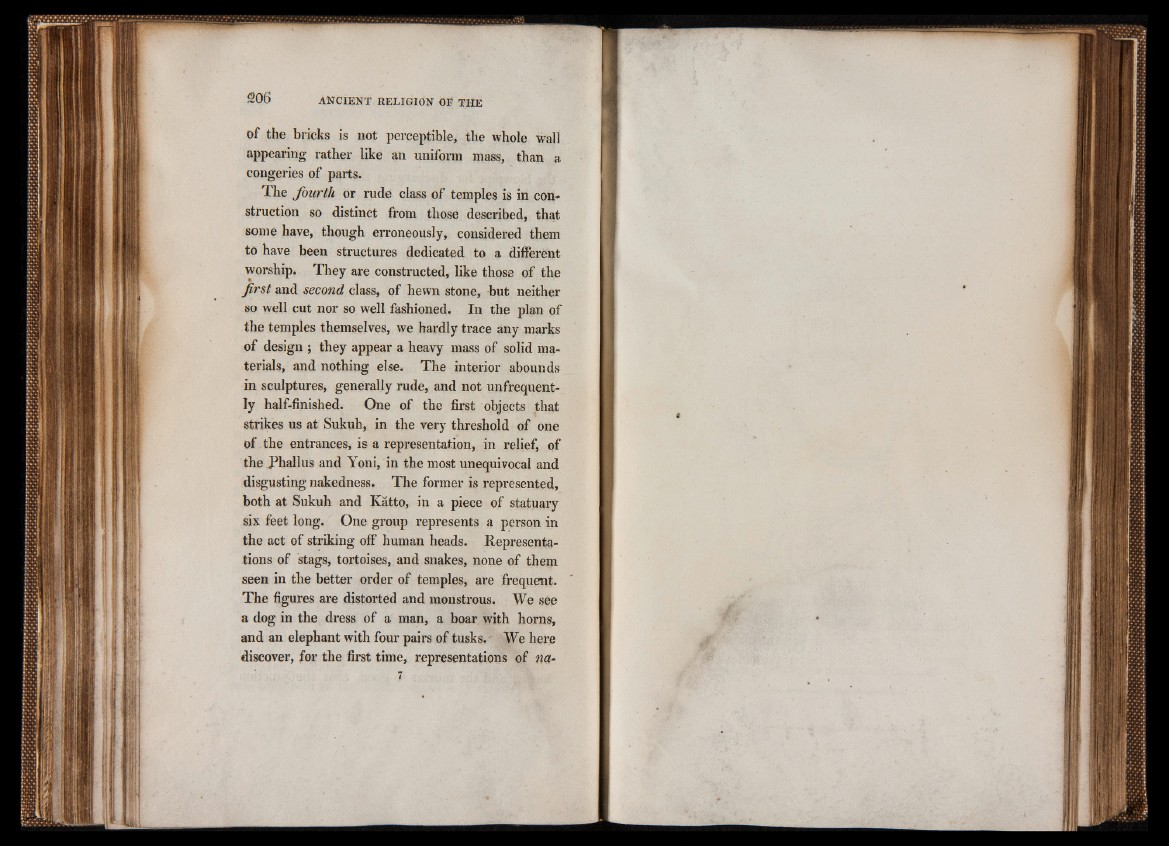
of the bricks is not perceptible, the whole wall
appearing rather like an uniform mass, than a
congeries of parts.
The fourth or rude class of temples is in construction
so distinct from those described, that
some have, though erroneously, considered them
to have been structures dedicated to a different
worship. They are constructed, like those of the
first and second class, of hewn stone, but neither
so well cut nor so well fashioned. In the plan of
the temples themselves, we hardly trace any marks
of design j they appear a heavy mass of solid materials,
and nothing else. The interior abounds
in sculptures, generally rude, and not unfrequent-
Iy half-finished. One of the first objects that
strikes us at Sukuh, in the very threshold of one
of the entrances, is a representation, in relief, of
the Phallus and Yohi, in the most unequivocal and
disgusting nakedness. The former is represented,
both at Sukuh and Katto, in a piece of statuary
six feet long. One group represents a person in
the act of striking off human heads. Representations
of stags, tortoises, and snakes, none of them
seen in the better order of temples, are frequent.
The figures are distorted and monstrous. We see
a dog in the dress of a man, a boar with horns,
and an elephant with four pairs of tusks.' We here
discover, for the first time, representations of na